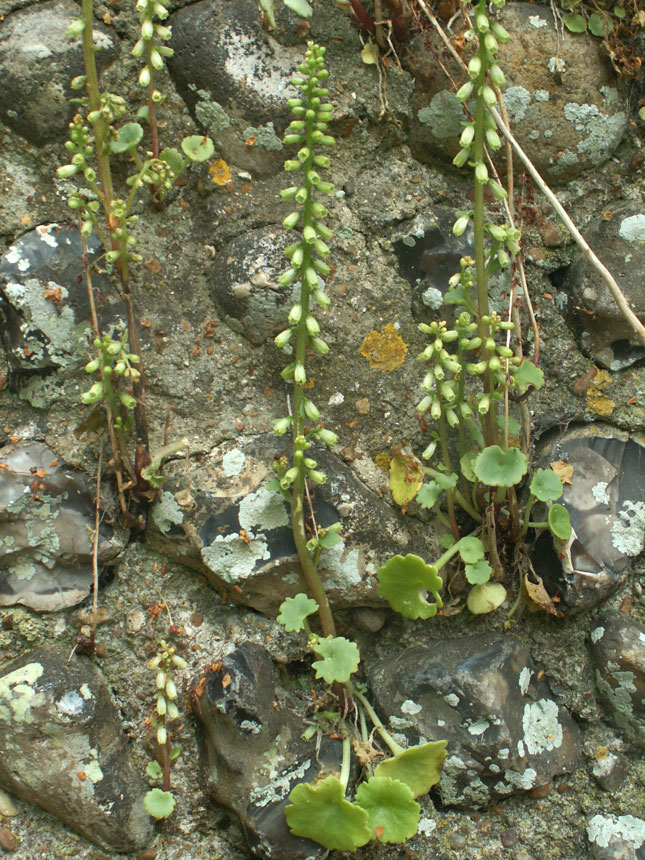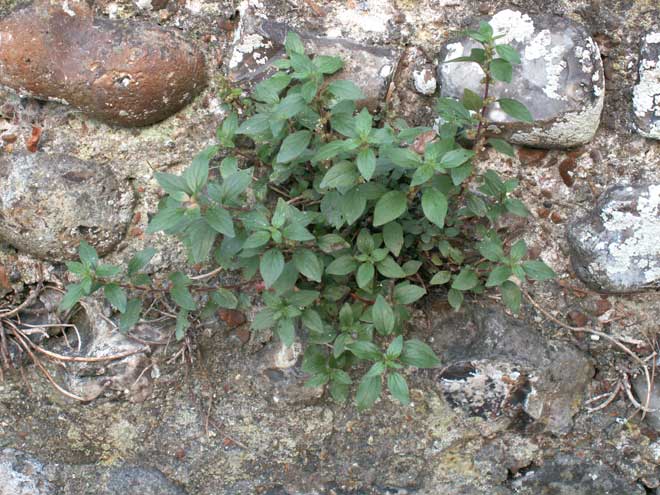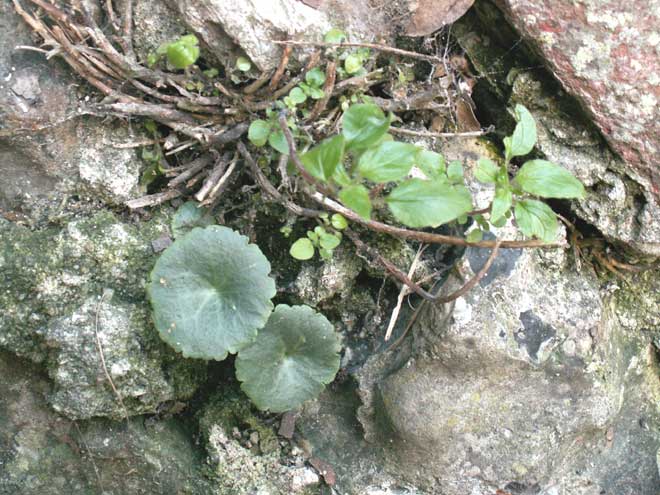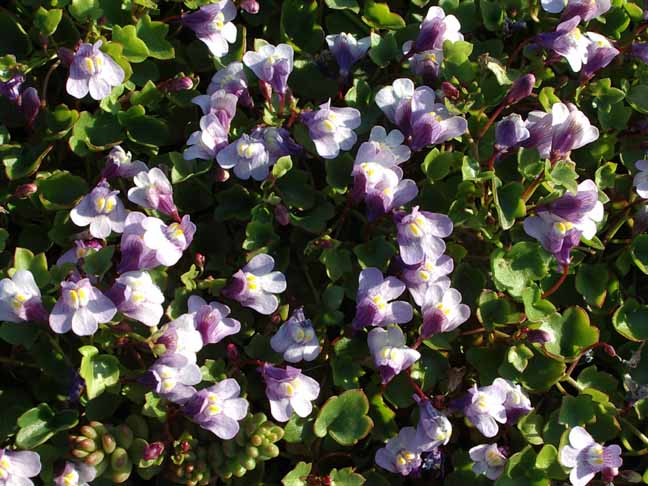.jpg)
11 February 2021
Wall Rue (an evergreen fern) on a Steyning twitten wall.
| Epilithic
= living on rocks. The equivalents would be "epixylic"
on wood, or "epidendric"
on trees - both have lots of Google hits. Purists might also distinguish
epicambic
for "on bark" but Google gives no hits, so looks like I've just invented
that one!
Comment
by Malcolm Storey
(BioImages)
on the on UK
Botany (Yahoo Group)
|
.jpg) |
11 February 2021 Wall Rue (an evergreen fern) on a Steyning twitten wall. |
 |
Maidenhair
Spleenwort on
a Steyning twitten wall.
Asplenium trichomanes |
| 8
January 2007
Lichens and Navelwort decorated the flint wall of St. Julian's Church, Kingston Buci, Shoreham. |
 |
|
||||
|
|
|
Greenery in the flint wall of St. Julian's Church, Kington Buci
These
plants are not really epiliths (not growing on the rock itself) because
they grow from cracks
in the flint wall
| 26
April 2006
The Dandelion in the photograph was growing in the flint wall bordering the twitten next to the railway garden in Shoreham town. Dandelions seem to be more prevalent than usual this year, especially in a plot on the Hamm Road Allotments. (These were rotivated and eliminated on 30 April 2006.) |
 |
Back
to Shoreham Town & Gardens 2006
Wild
Flowers Addenda 2006
 |
 |
 |
|
|
|
Greenery in the flint wall of St. Julian's Church, Kington Buci
29
April 2005
 |
 |
Ivy-leaved Toadflax was found on old flint walls in Shoreham at this time of the year.